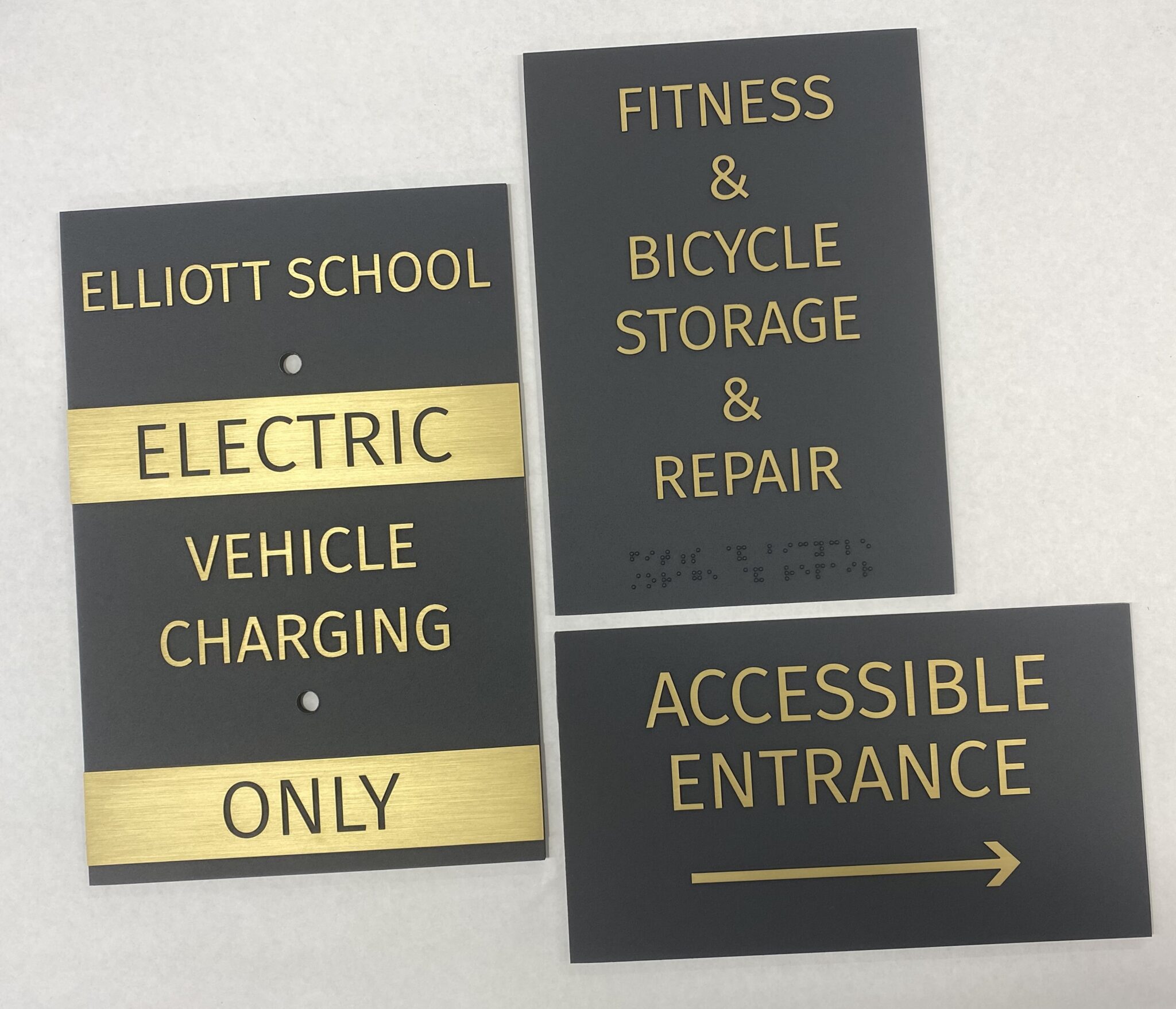The Influence of ADA Signs on Community Availability
The Influence of ADA Signs on Community Availability
Blog Article
Exploring the Key Functions of ADA Signs for Boosted Availability
In the world of availability, ADA signs function as quiet yet effective allies, making certain that spaces are accessible and comprehensive for individuals with impairments. By integrating Braille and responsive aspects, these signs damage barriers for the visually impaired, while high-contrast shade schemes and understandable typefaces provide to varied aesthetic demands. Furthermore, their calculated placement is not arbitrary however instead a computed effort to help with smooth navigating. Past these attributes lies a deeper story concerning the evolution of inclusivity and the ongoing dedication to producing fair areas. What more could these indications represent in our pursuit of universal ease of access?
Significance of ADA Compliance
Making sure compliance with the Americans with Disabilities Act (ADA) is essential for cultivating inclusivity and equivalent gain access to in public spaces and work environments. The ADA, established in 1990, mandates that all public facilities, companies, and transport services accommodate people with disabilities, guaranteeing they appreciate the exact same civil liberties and possibilities as others. Conformity with ADA criteria not just meets legal responsibilities but also boosts a company's reputation by showing its dedication to diversity and inclusivity.
One of the key aspects of ADA conformity is the application of available signs. ADA indications are developed to make sure that individuals with specials needs can easily navigate through buildings and rooms.
Moreover, sticking to ADA policies can minimize the risk of legal effects and possible fines. Organizations that stop working to abide by ADA guidelines may deal with penalties or suits, which can be both economically difficult and destructive to their public image. Hence, ADA compliance is essential to promoting a fair atmosphere for everybody.
Braille and Tactile Aspects
The consolidation of Braille and responsive elements into ADA signage embodies the concepts of ease of access and inclusivity. It is usually put under the equivalent message on signs to guarantee that individuals can access the info without aesthetic assistance.
Tactile elements extend beyond Braille and consist of raised characters and signs. These components are created to be discernible by touch, enabling people to recognize area numbers, restrooms, leaves, and various other essential locations. The ADA sets particular guidelines regarding the dimension, spacing, and placement of these responsive elements to maximize readability and make certain uniformity throughout different settings.

High-Contrast Color Design
High-contrast color design play a pivotal duty in boosting the presence and readability of ADA signs for people with visual problems. These schemes are necessary as they optimize the distinction in light reflectance between message and history, ensuring that indications are quickly noticeable, also from a range. The Americans with Disabilities Act (ADA) mandates using certain color contrasts to suit those with minimal vision, making it a vital element of compliance.
The efficacy of high-contrast colors depends on their capability to stand out in different lighting problems, consisting of poorly lit environments and visit their website areas with glare. Commonly, dark text on a light history or light message on a dark background is used to achieve ideal comparison. Black text on a white or yellow background provides a plain aesthetic difference that helps in quick acknowledgment and understanding.

Legible Fonts and Text Size
When thinking about the style of ADA signs, the selection of understandable font styles and ideal text dimension can not be overemphasized. The Americans with Disabilities Act (ADA) mandates that fonts have to be sans-serif and not italic, oblique, script, highly decorative, or of unusual form.
According to ADA standards, the minimum message height must be 5/8 inch, and it ought to increase proportionally with seeing distance. Consistency in message dimension adds to a cohesive visual experience, helping people in navigating environments effectively.
Furthermore, spacing in between lines and letters is integral to clarity. Ample spacing avoids personalities from showing up crowded, boosting readability. By adhering to these criteria, designers can substantially improve access, ensuring that signs serves its desired purpose for all individuals, despite their aesthetic capabilities.
Reliable Positioning Approaches
Strategic positioning of ADA signs is crucial for making best use of ease of access and ensuring conformity with legal standards. Properly located signs guide individuals with handicaps properly, helping with navigation in public areas. Key factors to consider include distance, elevation, and presence. ADA standards specify that indicators ought to be installed at an elevation in between 48 to 60 inches from the ground to ensure they are within the line of sight for both standing and seated people. This common elevation range is essential for inclusivity, enabling wheelchair individuals and people of differing elevations to access info easily.
Additionally, signs should be placed adjacent to the latch side of doors to enable easy identification prior to access. Uniformity in basics sign placement throughout a center improves predictability, lowering confusion and improving overall individual experience.

Final Thought
ADA indications play a crucial role in advertising ease of access by incorporating attributes that resolve the demands of individuals with specials needs. These components collectively promote a comprehensive atmosphere, emphasizing the relevance of ADA conformity in making certain equivalent access for all.
In the world of availability, ADA indications offer as quiet yet effective allies, guaranteeing that spaces are accessible and comprehensive for people with specials needs. The ADA, established in 1990, mandates that all public centers, companies, and transportation services accommodate people with disabilities, guaranteeing they delight in the very same civil liberties and chances as others. ADA Signs. ADA signs are made to guarantee that people with disabilities can quickly browse with rooms and buildings. ADA guidelines specify that indications ought to be placed at a height between 48 to 60 inches from the ground to ensure they are within the line of sight for both standing and seated individuals.ADA indicators play an important role in advertising access by incorporating functions that address the demands of people with disabilities
Report this page